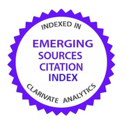Tarificación analítica avanzada para cálculo de escenarios post-covid19 en los seguros de automóviles
DOI:
https://doi.org/10.26360/2020_7Palabras clave:
modelización predictiva, siniestro, ratio combinado, escenarios, aprendizaje automáticoResumen
La reducción de la movilidad durante la pandemia COVID19 ha supuesto una disminución de la siniestralidad en el seguro de automóviles. Las entidades necesitarán realizar escenarios de tarificación para posibles cambios en los hábitos de transporte, usando los datos del ejercicio 2020. Mostramos cómo utilizar métodos de Machine Learning (árboles de decisión y gradient boosting) para evaluar dichos escenarios y proponemos una estrategia para corregir las circunstancias de exposición al riesgo que se han dado durante la pandemia. Se concluye que es posible utilizar la información existente durante el periodo de confinamiento siempre que se puedan identificar y corregir los cambios en las carteras, viendo si el impacto es homogéneo por grupos de riesgo.
Descargas
Citas
Boucher, J-P., Côté, S. y Guillen, M. (2017). Exposure as duration and distance in telematics motor insurance using generalized additive models, Risks, 5(4), 54. https://doi.org/10.3390/risks5040054
Breiman L., Friedman J. H., Olshen R. A. y Stone, C. J. (1984) Classification and Regression Trees. Wadsworth. Belmont, California.
Charpentier, A. (2014). Computational Actuarial Science with R. CRC press, Boca Raton.
Côté, M. P., Hartman, B., Mercier, O., Meyers, J., Cummings, J. y Harmon, E. (2020). Synthesizing property & casualty ratemaking datasets using generative adversarial networks. ArXiv preprint arXiv:2008.06110.[Fecha del último acceso: 25.09.2020] https://arxiv.org/pdf/2008.06110.pdf
Denuit, M., Maréchal, X., Pitrebois, S. y Walhin, J.F. (2007). Actuarial modelling of claim counts: Risk classification, credibility and bonus-malus systems. John Wiley & Sons, Berlin.
Dirección General de Tráfico (2020). Accidentalidad en Semana Santa. Se reducen un 52% los fallecidos. [Fecha del último acceso: 25.09.2020] http://revista.dgt.es/es/noticias/nacional/2020/04ABRIL/0415siniestralidad-vial-en-Semana-Santa.shtml#.X1e3uHnHzIU
Dutang, C. y Charpentier, A. (2016). CASdatasets. R package version, 1-0. [Fecha del último acceso: 25.09.2020] http://cas.uqam.ca/pub/R/web/CASdatasets-manual.pdf Friedman, J. H. (2001). Greedy function approximation: A gradient boosting machine. Annals of Statistics, 29(5), 1189–1232.
Gao, G., Meng, S. y Wüthrich, M.V. (2019). Claims frequency modeling using telematics car driving data. Scandinavian Actuarial Journal, 2019(2), 143-162.
Gao, G., Wüthrich, M.V. y Yang, H. (2019). Evaluation of driving risk at different speeds. Insurance: Mathematics and Economics, 88, 108-119.
Guillen, M., Nielsen, J.P., Ayuso, M. y Pérez-Marin, A.M. (2018). The use of telematics devices to improve automobile insurance rates. Risk Analysis 39(3), 662-672.
Howard, J. (2020). Plague was one of history’s deadliest diseases—then we found a cure, National Geographic, [Fecha del último acceso: 25.09.2020] https://www.nationalgeographic.com/science/health-and-human-body/ human-diseases/the-plague/
Ke, G., Meng, Q., Finley, T., Wang, T., Chen, W., Ma, W. y Liu, T.Y. (2017). LightGBM: A highly efficient gradient boosting decision tree. In Advances in neural information processing systems (pp. 3146-3154). Editado por I. Guyon, U.V. Luxburg, S. Bengio, H. Wallach,
R. Fergus, S. Vishwanathan y R. Garnett. Proceedings of “Neural Information Processing Systems 2017.” Long Beach, CA, 4-9 Diciembre, 2017. [Fecha del último acceso: 25.09.2020] http://papers.nips.cc/paper/6907-lightgbm-a-highly-efficient-gradient-boosting-decision
Lorentzen, C. y Mayer, M. (2020). Peeking into the black box: an actuarial case study for interpretable machine learning. SSRN. http://dx.doi.org/10.2139/ssrn.3595944
Noll, A., Salzmann, R. y Wüthrich, M. V. (2020). Case study: French motorthird-party liability claims. SSRN 3164764. http://dx.doi.org/10.2139/ssrn.3164764
Pesantez-Narvaez, J., Guillen, M. y Alcañiz, M. (2019). Predicting motor insurance claims using telematics data—XGBoost versus logistic regression. Risks, 7(2), 70. https://doi.org/10.3390/risks7020070
Počuča, N., Jevtić, P., McNicholas, P.D. y Miljkovic, T. (2020). Modeling frequency and severity of claims with the zero-inflated generalized cluster-weighted models. Insurance: Mathematics and Economics, 94, 79-93.
Forbes (2020). Car Insurance Hike Looms Post-Covid, Maverick Demands Pricing Reform [Fecha del último acceso: 25.09.2020] https://www.forbes.com/sites/advisoruk/2020/07/07/car-insurance-hike-looms-post-covid-maverick-demands-pricing-reform/#53709af369cb
Richter, A. y Wilson, T.C. (2020). Covid‑19: implications for insurer risk management and the insurability of pandemic risk. The Geneva Risk and Insurance Review. En prensa. https://doi.org/10.1057/s10713-020-00054-z
Schelldorfer, J. y Wüthrich, M.V. (2019). Nesting classical actuarial models into neural networks. Available at SSRN 3320525. http://dx.doi.org/10.2139/ssrn.3320525
Su, X. y Bai, M. (2020). Stochastic gradient boosting frequency-severity model of insurance claims. PloS one, 15(8), e0238000. https://doi.org/10.1371/journal.pone.0238000
Wüthrich, M.V. (2019). Bias regularization in neural network models for general insurance pricing. European Actuarial Journal, 1-24.
Descargas
Publicado
Cómo citar
Número
Sección
Licencia
Derechos de autor 2023 Xenxo Vidal-Llana, Montserrat Guillen

Esta obra está bajo una licencia internacional Creative Commons Atribución-NoComercial-SinDerivadas 4.0.


















